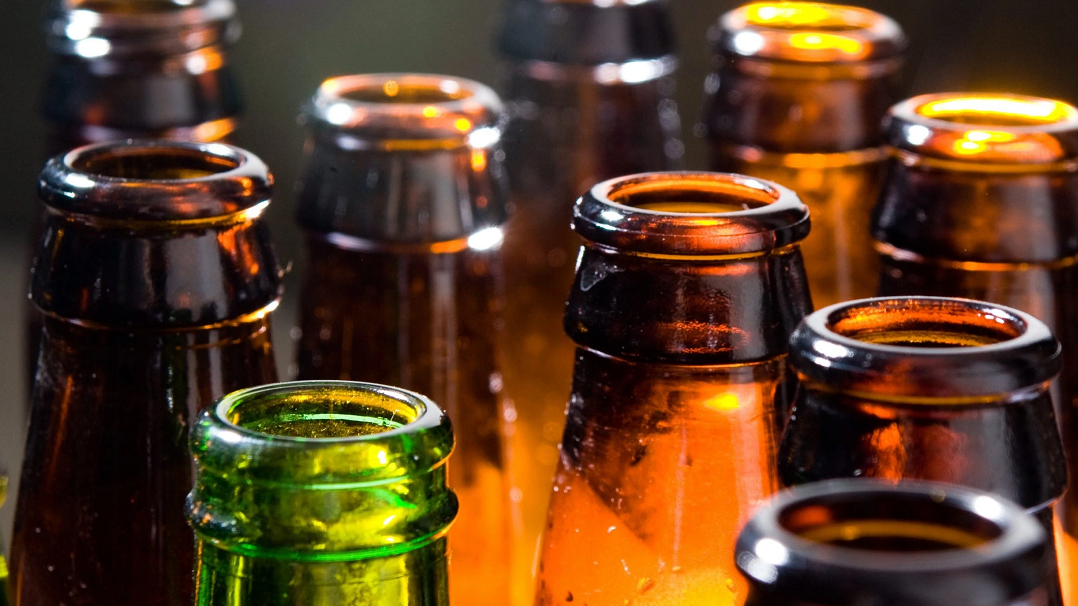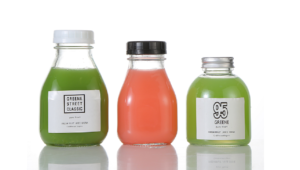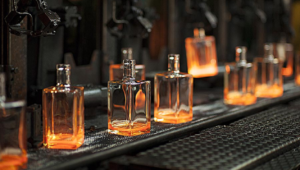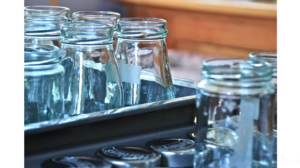Starting out on your own can be a bit challenging in the beginning. For starters, you will need to have some background knowledge of how brewing works. You will also need fresh ingredients like wheat and barley etc.
After crafting your finest brew, it’s time to think about the packaging that will deliver your creation to consumers. Whether you’re brewing at home or brewing in quantity for your brew pub, it is important that you select the right beer bottle to suit your brew and your personal brand. Beer packaging is the three-dimensional representation of your brand ethos. To your end-user, your beer and its package are inseparable. The package is the beer, and the beer is the package. Thus, finding your best beer bottle supplier will efficiently promote your beer market.
There are a variety of options in beer bottling to fulfill your growing needs and delight your customers. Before you roll out a new packaging design, take a minute to consider how to choose the right glass beer bottles, from the shape, capacity size, color and closures, which will work together to ensure that your beer has a strong shelf presence.
History of Beer Brewing
We drink out of bottles every day, but don’t often think about why these bottles exist and how their function has evolved over time. If you are interested in knowing the history of beer brewing, just click this link. It will do some help.
Types of beer bottle
Broadly speaking, there are three main types of beer bottles. The difference is mainly based on the shape and the positioning of certain features. The three categories include the following.
Type 1 – Swing Top Beer Bottles
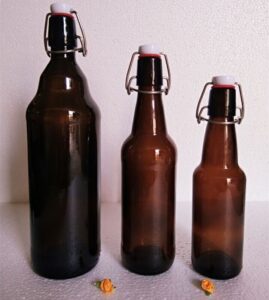
These glass bottles reusable, easy to open and seal, featuring a swing-top cap. Swing top bottles, and many people call it as Grolsch bottles, are as functional as they are beautiful. The swing top beer bottles, are durable, high-pressure, widely used for home-brewing, craft beer brewery, capacity from 250ml to 1 Liter.
Type 2 – Longneck Beer Bottles
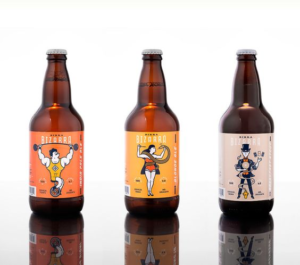
This bottling beer also called regular beer, which is usually massed-produced. These beer bottles use a screw cap as closure, sealed by machine. Once the crown cap top is opened, it cannot be refitted back properly. Compared to the swing top beer bottles, they are the most common nowadays after brewing competitions changed the rules that made it mandatory for any entrant to submit beers that have crown caps instead of swing top closures.
Type 3 – Beer Growlers
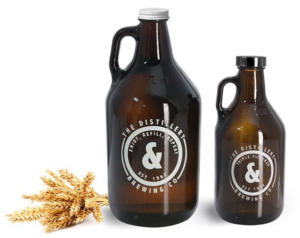
The term growler has been around since the 1800s as a means to carry beer home from the local pub to enjoy at home. Thankfully, the days of hauling beer in an open top pail are gone and the modern day growler has taken its place. Characterized by the jug-like shape, growlers range in size from 32oz to 1 gallon. Traditional growlers are made with amber glass and include a finger loop, making carrying easy. Growlers are available in clear and amber colors.
Factors in Consider When Choosing Beer Bottles
When setting up your own brewery, the bottles you go for have to be unique in a way that communicates your brand and style. Before settling down on a beer bottle, here are some of the things you have to keep in mind.
1 – Shapes
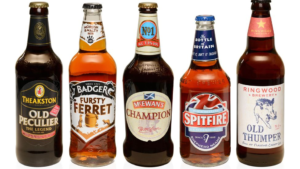
How will you define the physical space your bottle will take up on the shelf and in the hands of your consumers? The shape of beer bottle is everything. It is the first thing people see even before the branding.
Think of your beer and your brewery as if it were a person. Now describe that person. Is it friendly, formal or flirtatious? Is it the quirky uncle, the girl next door or the grilling buddy? Your shape helps to define the character of your brew.
Beer bottles come in 4 distinct shapes that include the following:
Shape 1 – Cylindrical
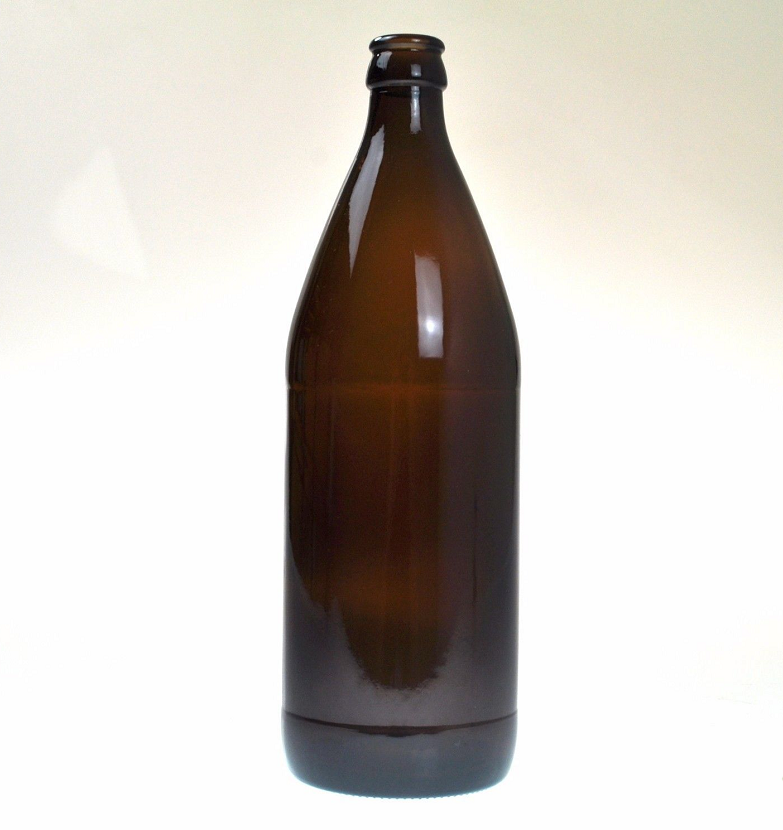
A cylindrical shape is the prime geometric choice for the production and packaging of beer. This round footprint is efficient in its use of space and materials, and it is easiest to manage when it comes to labeling, filling and other considerations.
Shape 2 – Longneck

The longneck bottle is another fimiliar beer bottle shape that is more widely used in North America than in any other part of the world. The first shape that comes to mind is the longneck beer bottle. This bottle design has key dimensions adopted by large and small brewers. In addition to its iconic long neck, this bottle has familiar round shoulders and a steep indent label panel. This protects the label from scuffing and allows for flexibility in label and embossing options.
Although the longneck shape is an unmistakable option, other shapes may increase your brand equity and recognition.
Shape 3 – Belgium
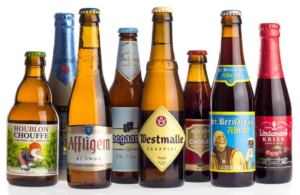
Belgium shaped glass beer bottle, is one of the oldest beer bottle shapes that owes its origin to Belgium, home to some of the oldest and the most famous breweries on the planet. The double bumped shoulder helps prevent yeast solids from transferring into a glass when poured and making the beer cloudy in appearance. It is the perfect bottle for wheat-based beers. Stouts, porters and other dark beers pair nicely with this bottle as well.
A more modern take on this blast-from-the-past bottle features a stepped indent at the heel and just below the shoulder. These reference points provide label protection against scuffing during the production and packaging of your one-of-a-kind brew.
Shape 4 – Stubby and Steine
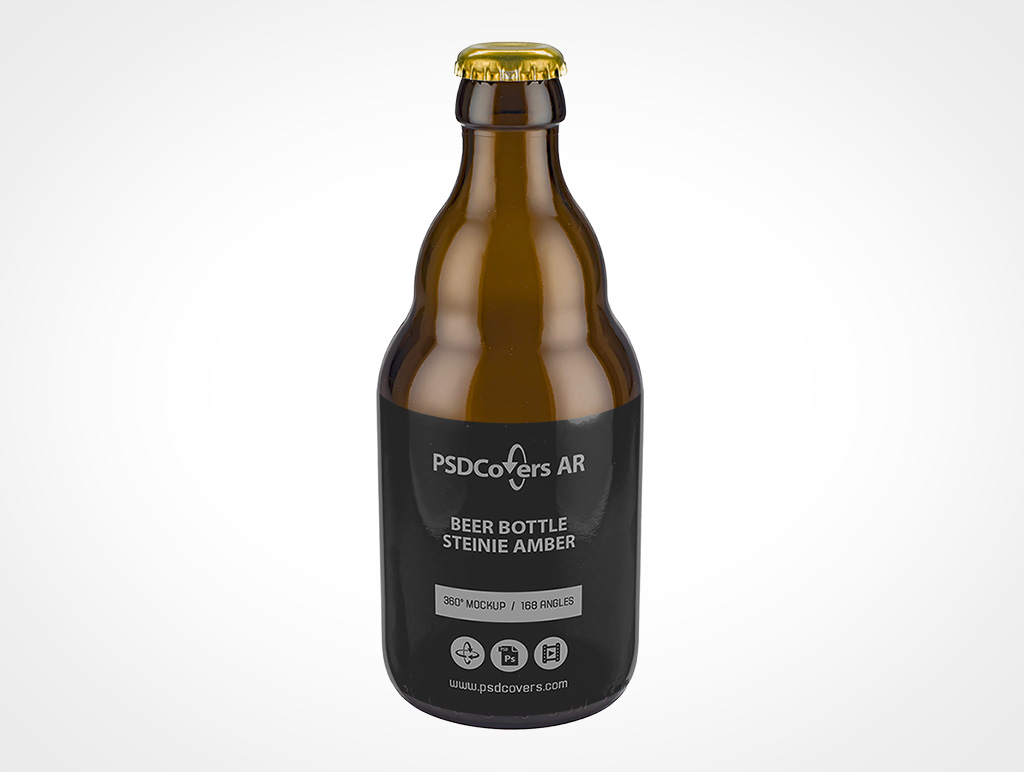
A short, wide and compact bottle is often referred to as a stubby or originally a steinie. Introduced during the age of prohibition, where the need for a smaller bottle that was easy to hide was necessary. This bottle is short and compact, but provides for larger diameter. While there is a larger main label panel, the lack of a neck generally reduces the cost of additional labeling.
These bottles are disruptive at the shelf and have several operational advantages, including easy handling due to a lower center of gravity. Its stout stature also takes up less space for the bottle manufacturer, the brewery, the retailer and the end-user. The bottle is trending because of its nostalgic look and sturdy feel in the consumer’s hand.
Sizes
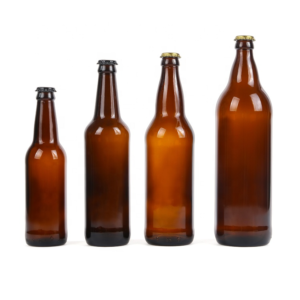
While clearly shapes does matter, size is another important aspect to consider when packaging your best brew.
The size of your beer bottle communicates more than you may realize. These sharing and emergent bottle sizes are disrupting the standards of beer packaging and changing the way we pour, drink and socialize.
Size 1 – Standard: 12 ounce
The-12 ounce bottle has been the standard size for beer bottles since 1945, and many manufacturers and breweries have stuck to that size ever since. The European equivalent is the 330 millilitre (11.2 ounce)
Apart from the most popular, standard sizes (330ml in Europe and 12oz in the US), there are a couple of other options you may want to consider depending on a trend you are trying to tap into:
Size 2 – TO SHARE: 22 OZ / 750 ML
The 22-ounce bottle (650ml), or the bomber, is an innovative and strategic package size. This share size bottle is a favorite among master brewers for distributing special or limited run products. The 22 ounce is a contemporary alternative for that bottle of wine you plan on bringing to the next dinner party.
The 750ml bottle offers many of the same conveniences as the 22-ounce bomber, but in a volume more similar to spirits bottles. This format is a true sharing size, promoting friendship and comradery. Beyond these popular share sizes are emerging trends that are driving new capacity options.
Size 3 – Smaller Size Trend: 7OZ / 250ml
Who likes to drink their beer warm? The smaller format bottle challenges the rising temperatures of hot summer days. This petite bottle size keeps beer cold and beach goers happy. It provides a perfect size for trial use or a variety configuration that offers a flight of beer prepackaged! Alternatively, it can be used for high ABV beers, reducing alcohol levels.
What About The 16OZ / 500ml Size?
While it is a rather popular, standard size in Europe, the 16oz is more of an emerging capacity trend in the US. This is more of a masculine format which offers larger physical dimensions within the consumer’s hand for a semi-customized grip. A true draft sized pint.
Generally, as far as the beer bottle size is concerned, it is rare for them to go beyond 25 ounces, as is the case with most spirits bottles. With most beers having a 7% alcohol content, it makes more sense to package them in 16-ounce bottles that allow someone to drink several bottles in the company of other people.
Generally, as far as the beer bottle size is concerned, it is rare for them to go beyond 25 ounces, as is the case with most spirits bottles. With most beers having a 7% alcohol content, it makes more sense to package them in 16-ounce bottles that allow someone to drink several bottles in the company of other people.
Colors of Beer Bottles
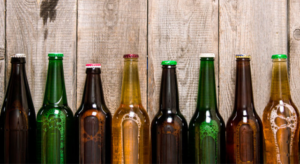
Color communicates product and brand positioning, while playing a role in the protection of your brew. The color of a glass bottle is literally molded into the container, giving it a depth as a natural characteristic of the material as a substrate. Color can be heightened by shape, embossing and the varying thickness of the glass. Most importantly, glass bottles pair color with translucence, which helps to showcase and enhance the natural visual properties of beer. There are three basic colors of glass available to you.
Color 1 – Amber
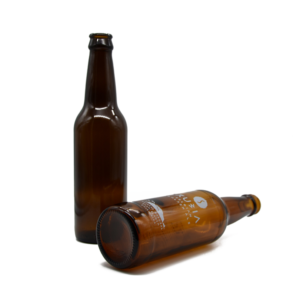
The oldest and most widely used color for beer bottles is amber. Amber bottle is perhaps the most identifiable color for beer bottles. Amber glass provides excellent protection from UV radiation, blocking all wavelengths shorter than 450 mm. This protection safeguards the quality of your brand by ensuring the taste of your brew remains untouched, undisturbed and unaltered.
However, being that widespread a color, amber does not stand out. If you are looking to score attention, then you should consider other colors.
Color 2 – Flint

You would be hard-pressed to find a clear beer bottle even though the transparency of this color showcases the actual color of your beer. The reason why beer bottles are colored is because of the effect of UV light that has the ability to alter the taste of the beer. Due to its lucidity, beers bottled in flint glass should not require strict ultraviolet light protection. UV stable ciders and flavored malt beverages are often bottled in flint glass.
Color 3 – Green

Green glass provides slightly more ultraviolet protection than flint glass but not as much as amber. Green beer bottles have their own unique appeal as they also showcase how a beer looks like at first glance. To become even more visually disruptive, consider using green glass.
Closures for Beer Bottles
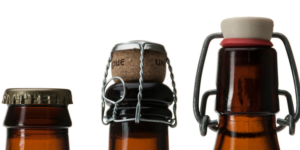
Now we move on to consider how bottle closure to ensure that your beer has the strongest shelf presence. How the bottle is closed and opened is as important as the quality of the contents inside of it. The part that meets a consumer’s lips has to be properly sealed to keep out any contaminants and impurities that may affect the product and the well-being of the drinker. Beer bottle closures come in two types.
Closure 1 – Crown cap / Pry-off Closure

The crown cap, also know as pry-off, is perhaps the most popular and preferred closure in the craft beer industry. It reduces oxygen egress, requires a bottle opener and is familiar among consumers. The pry-off closure usually measures around 26-millimeter.
Closure 2 – Cork and Cage Closure
The cork and cage closure often conveys that the bottle features a more limited or unique product offering. It speaks to exclusivity and premium style and is often used on share bottle sizes. These closures are rare, you will only find them in luxury brands of beer, the type that you cannot find in your local bar.
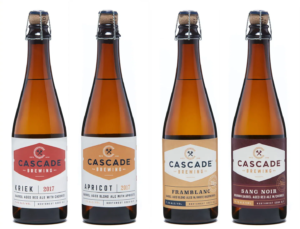
Cork and cage closures are fun to open — the anticipation of pulling a cork, the sound of the “pop” and the gurgle of beer coming from the bottle. Traditionally used for champagne bottles, they are very celebratory in nature, creating an experience of excitement and joy.
Closures ensure product safety and freshness and have a big impact on how the consumer will access and drink your beer, but the final touch and perhaps the greatest impact on the tenets of your brand is how you decorate and label the bottle.
Conclusion
Picking the correct bottle for your beer requires careful consideration of several packaging design elements. You must successfully choose how you will bring together various packaging components from size and shape to color and decoration to create a successful and compelling brand presence. You need the right product and packaging with the right positioning and the right market timing to be successful, and glass packaging offers a number of advantages to help you achieve success.
If you’re looking for beer bottles, welcome to consult to get free quotes . We are your reliable China glass bottle manufacturer, performing as a leader of beer bottle wholesale.

